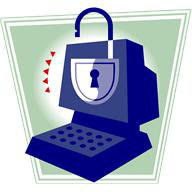How to Find Out if Your Password Has Been Stolen

By Eric Ravenscraft From PC magazine Data breaches are a regular occurrence these days, but have hackers been digging around in your personal information? These tools will help you figure out if your online accounts have been hacked, and your email addresses and passwords stolen. Large data breaches happen with uncomfortable frequency. It has never been more necessary to secure your online accounts with a password manager and two-factor authentication, where available. But what if a service you use is hacked? The following tools can help you determine if your accounts were caught up in a breach.





